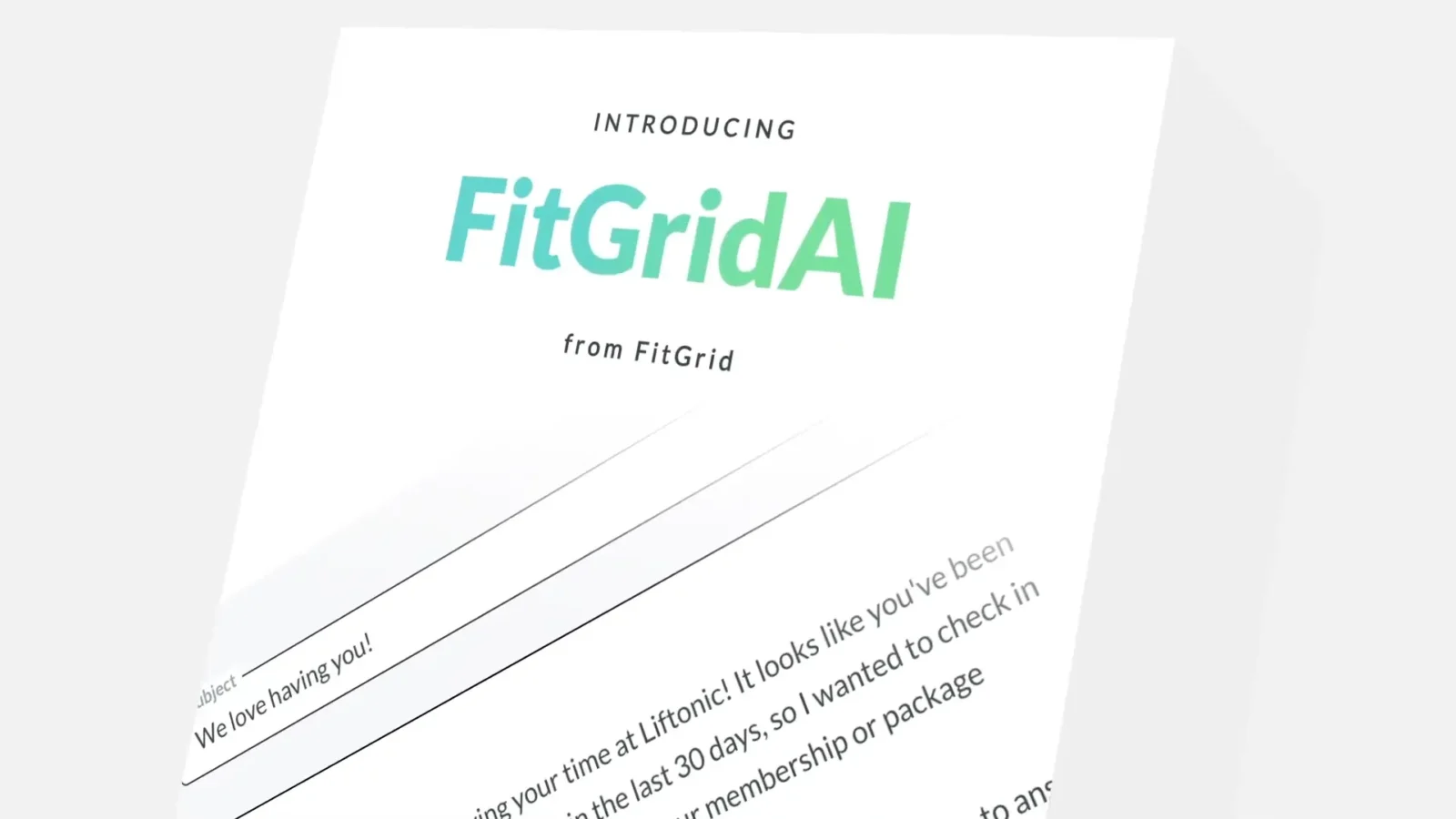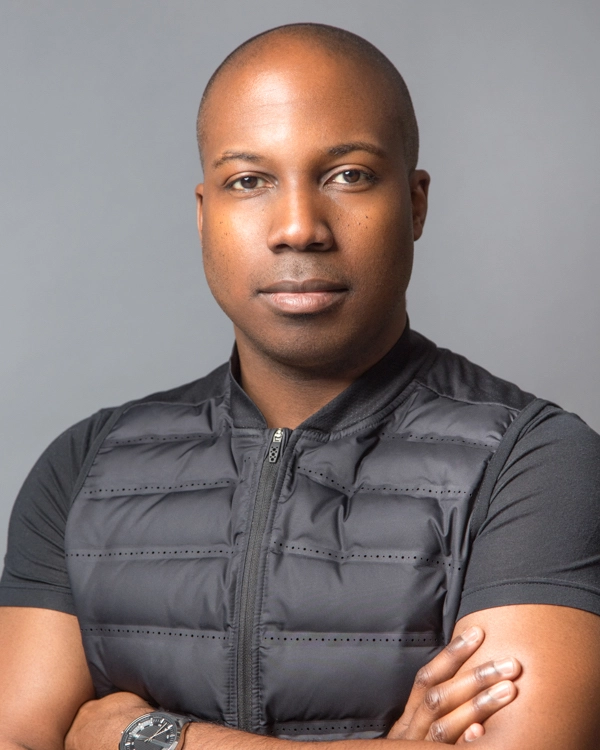How FitGrid Is Using Software, AI To Help Studios Build Community
Partnership
Sponsored By FitGrid

FitGrid’s software is used by over 1,000 boutique fitness studios. It’s helped them increase client returns by 35%
For FitGrid founder and CEO Ntiedo Etuk, most of the boutique fitness industry is failing to fully leverage its chief selling point: community.
Etuk came to that realization while he was fervently attending Pilates classes in New York City during his recovery from a foot injury.
“After about three months, I realized I still didn’t know 70% of the people in the community,” Etuk said of his Pilates experience at the time. “I thought, ‘This is really weird, because if I did know them, I’d be more likely to stay.’”

“Fitness is all about the people,” he explained. “You’re more likely to return to class the more connected you are to the other clients, to the instructor that’s motivating you, to the front-desk person who’s greeting you. That’s revenue for these studio owners, but there was no community-engagement software that helped with that.”
So, in 2018, he decided to create it, and to make sure he completely understood studio management dynamics, Etuk created a pop-up fitness studio of his own – and it was rough.
“One of the big problems I had was that I didn’t know who I should be contacting each day,” he recalled. “Every day, I had this feeling in the pit of my stomach that there was someone, somewhere, who I should be talking to and drawing back in because they were about to stop coming to the studio. I just didn’t know who.”
Today, FitGrid’s software is used by over 1,000 boutique fitness studios in more than a dozen countries. It’s helped studios increase client returns by 35%, increase the amount of revenue they generate off first-time clients two-fold within the first 90 days and keep their members for at least 3 months longer than they used to.
FitGrid gets those results by helping studios foster what Etuk and his team call “community engagement,” which in turn drives revenue. The idea is that FitGrid’s community engagement software activates all the members of the community (staff, instructors and clients) towards the business’s goals.
If the goal of a traditional marketing campaign was to get a client to stay, a message saying “please stay” would go from the studio to the client. With FitGrid’s community engagement software, a “please stay” message would go from the studio; a high-five and a “please stay” would be encouraged from the instructor; and a connection request showing the client is a welcome member of the community would come from other clients they’d been in class with.
3 products working seamlessly together
To accomplish such a feat, FitGrid created three main products: Studio, Pro and Class, which are designed for studio owners, instructors and consumers, respectively.
Through the Class app, consumers can purchase classes from different FitGrid-affiliated studios, track their workouts, chat with each other, connect with other users and even keep tabs on what classes their friends are taking.

When someone buys a class through the Class app, they get a prompt asking if they want to invite a friend. That helps drive customer acquisition for studios, since members are often eager to bring their friends to classes they enjoy.
“You’re the best referral mechanism for your studio,” Etuk says. “If you like it, you probably have friends or know other people who would like it as well.”
With FitGrid Pro, a boutique fitness studio’s instructors get access to class rosters, statistical overviews of their classes (including age breakdown, experience levels, injuries, etc.), note taking capabilities and helpful data on the people attending their classes. They also have the ability to send personalized messages after class, to groups of people or individuals.
“That drives huge engagement and return visits because people can’t believe that the instructor actually noticed them,” Etuk said. “We’ve made personalization really simple from that perspective.”
As part of its Studio app, FitGrid offers a tool which gives studio owners and their staff members a list of clients they should be reaching out to. Clients are split into different categories, including newly engaged clients that studios may be looking to convert into full-time members, clients with low levels of recent engagement who are at risk of dropping out and clients celebrating certain milestones like a 10-class anniversary.
“It solves that problem I ran into when I was running my studio: Who should I reach out to today?” Etuk says of FitGrid’s client-outreach tool.
FitGrid AI is changing the game
FitGrid is using AI to make its client-outreach tool even more effective and efficient for studios.
“In the first iteration, we gave you a bunch of information about these folks and you had to craft your own message based on a general template,” Etuk noted.
Now, FitGridAI creates custom email messages tailored towards specific customers a studio may be targeting.
“It takes all the information about that client and incorporates that into the messaging,” Etuk says. “What used to be a 15-minute exercise is now 6 seconds.”
In all, FitGrid says its AI tool can help studio owners reduce 300 minutes of work, a week, down to just 30.

Studio owners and their staff members can even set the tone of the AI-generated messages, choosing from options like friendly, urgent, emotional and motivational, to better connect with their clients. Users can override AI-generated messages to add in their own modifications if they choose to.
“That’s just the beginning of what we’re doing with AI,” Etuk said, adding that FitGrid is planning to roll out other innovations soon.
Etuk said FitGrid views AI as an “accelerator and an enabler” on top of the company’s already impressive business model.
“If you think about a studio – the dynamic of that room is made up of the energy that flows between the three people in that space – the instructor, the client, and the staff member,” he explained. “With the way we have designed our product set, we are the only solution that has a piece of software in the hands of each one of them. That gives us deep insight into that energy and gives us a huge opportunity to enhance and guide the flow of that energy on behalf of the studio, with the goal of helping it drive more business.”
“At the end of the day, it’s a relationship business, and we’re the best relationship platform in the game,” he said.



